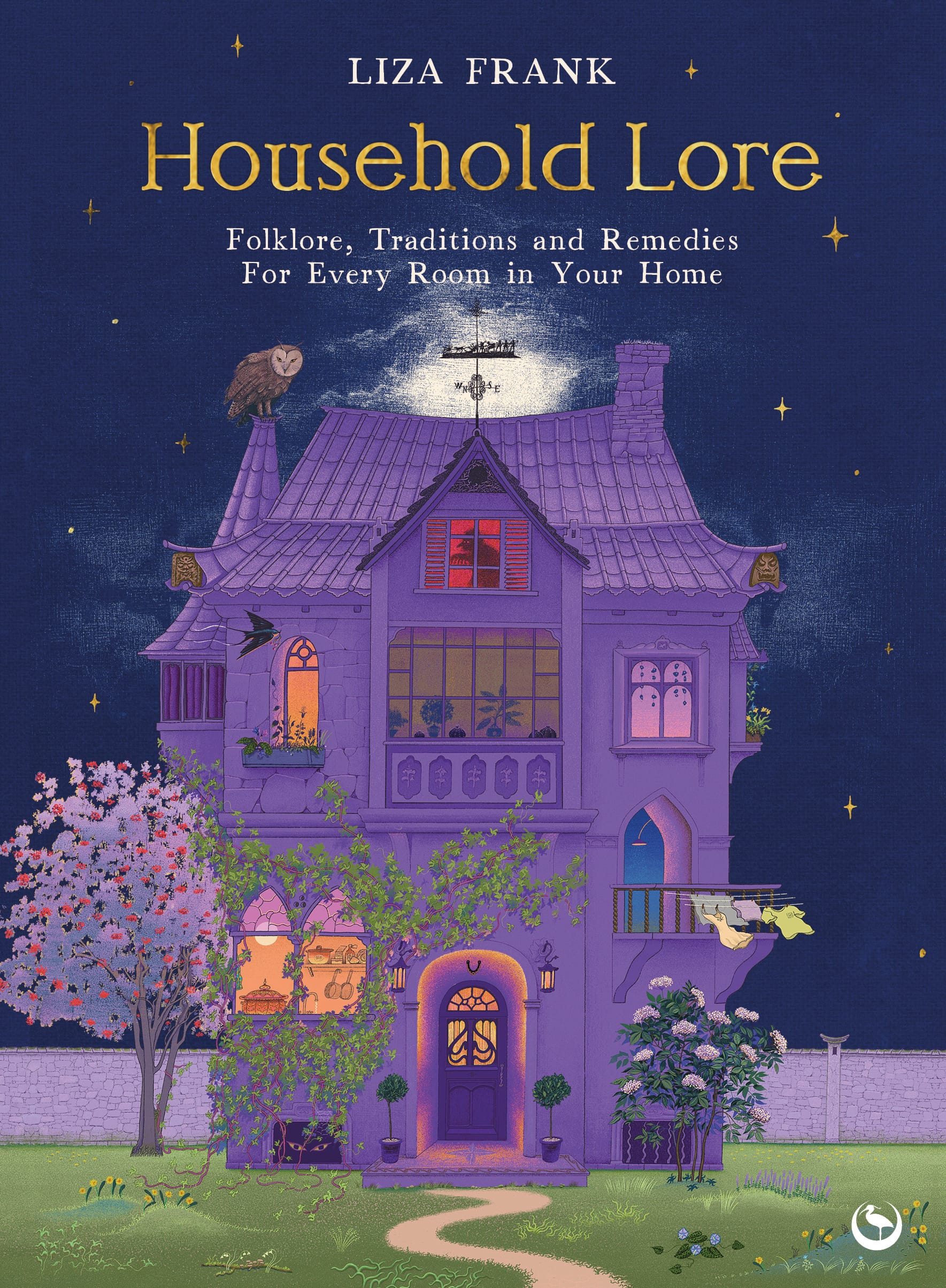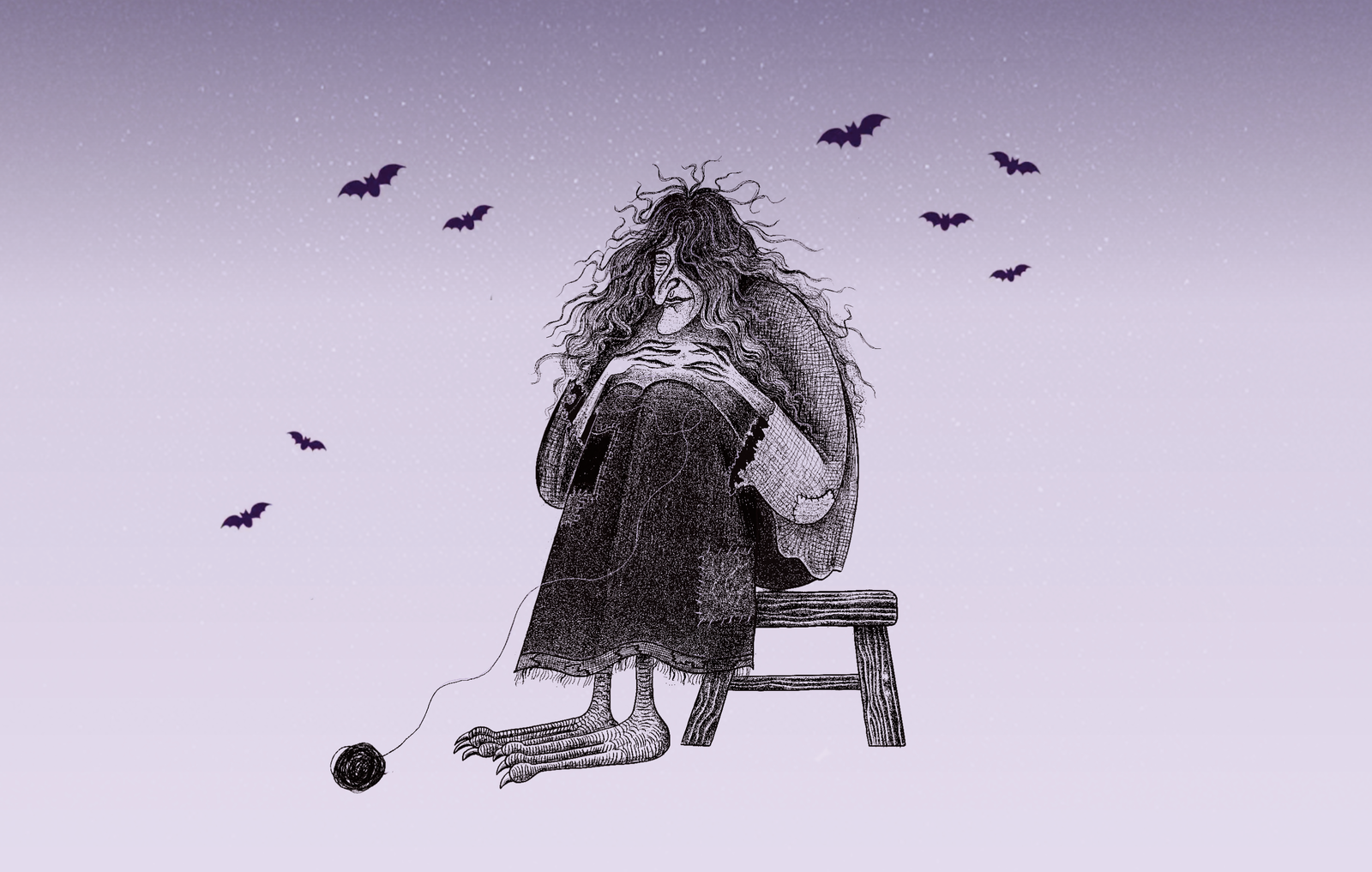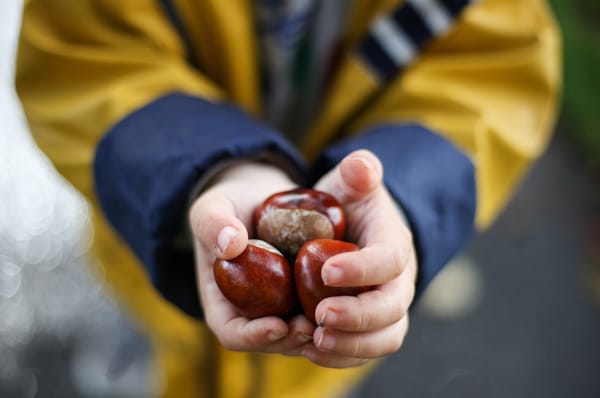Spiders and bagpipes may not be your first thought when thinking about autumn folklore, but you would be wise to take heed should you or a member of your family not be overly keen on these eight-legged legends. It was once written (and then observed several times since) that spiders are particularly fond of bagpipe music. Bagpipes, mandolin and indeed a gentle classical melody. So, in this moment when spiders are coming in and hanging out in your home, you might want to forgo the traditional wisdom of deterring them with conkers in the corners of your windowsills, or a spritz of water with a few drops of peppermint oil on your woodwork, and concentrate your energies on turning up some hardcore techno music whenever one appears, almost guaranteeing their quick exit.
Of course, spiders and bagpipes may not be crossing your mind at all when it comes to the folklore of the season. You may instead be wondering when the first frost of autumn will arrive, after which you can pick your sloes to make gin, or whether you’ve gathered all your ingredients from the garden to apply a love salve on St Luke’s Day on 18 October (marigold, marjoram, wormwood and thyme, if you’re wondering). But as autumn fills the trees and hedgerows with golds and reds, and the evenings draw in, a shiver haunts the air and the pumpkins are ripening, it is not unreasonable to suggest that many a folklore focus turns instead to the highlight of the season, Halloween (or Samhain, Crack Nut Night, Mischief Night and the start of Hallowtide, 31 October – 2 November, amongst other names).
The evening of 31 October is one of those moments within the ritual year where our world and that of the supernatural become uncomfortably close. However, when it comes to folklore of the home and ghostly goings on, there is plenty you can do to ensure that you are properly protected against any malevolent forces that might break through. Firstly, having a rowan tree by the entrance to your home is always a good idea. In terms of traditional countermeasures against evil, fairies, demons, witches and the like, rowan has the reputation of repelling anything that approaches with bad intent. However, if having a full-sized tree in your vicinity is an issue, don’t despair, hanging a branch across the top of your front door or even popping a rowan twig in your keyhole will still have the desired effect. If you and your children leave the protection of your home to trick or treat, wearing a necklace of rowan berries should help deter any supernatural unpleasantness as witches are said to detest the colour red. Although do note, rowan berries shouldn’t be eaten without proper preparation, so a circlet of woven rowan twigs and leaves might be a better solution for tinier humans.

‘A squeaky door hinge is an open invitation to a tricksome spirit looking for a place to hide'
Secondly, look to your hinges. A squeaky door hinge is an open invitation to a tricksome spirit looking for a place to hide. While remedying any creaks and groans with some coconut oil (coconuts are also thought to have protective qualities), why not double up and rub a few cloves of garlic over your hinges to keep the vampires at bay as well (this also works should you have a fireplace, just rub a clove or two underneath your mantelpiece so they can’t enter via the chimney).
And thirdly, but by no means lastly, demons are particularly sensitive to the smell of St John’s wort. If you’ve not managed to pick any blooms over the summer months, find yourself some dried St John’s wort and scatter it over your front doorstep, your windowsills and if you can reach it, your roof. This should drive away any nefarious presences from your home. •
Food folklore also plays a large part in Hallowtide, whether it’s repurposing your Jack o’ lantern innards into a Mash o’ Nine Sorts, toasting in the Samhain New Year with a glass of lambswool, leaving a small offering of food on your doorstep to nudge any visiting ghosts into a happier mood, or, for any single readers, secreting a cabbage leaf under your pillow on the 31st to dream of your one true love. Many cultures make specific traditional foods to celebrate the spooky season. In Mexico, no respectable Day of the Dead would be complete without pan de muertos, a sweet bun-like bread baked to honour the dead, while in Italy, fave dei morti, the almond or pine-nut biscuit baked in the shape of a broad bean, as eating broad beans was considered a good way to communicate with the spirits.
In the UK, there is the tradition of making soul cakes, soulmass loaves, or harcakes (and many other names besides). Despite having ‘cake’ in their title, soul cakes are really biscuits (or sometimes very flat parkin), baked on 2 November, All Souls’ Day. The recipe is simple and something tiny humans can easily manage, just remind them to always stir the ingredients clockwise to stir in the luck. Much like with all the name variations, the recipe is unfixed and changes depending on where you live, as does the shape of the cake or whether they have currants baked into the top. So if you want to start your own soul cake tradition, you have a little license to make them how you want them. Soul cakes were baked to give to children who’d knock on your door on All Souls’ Night and every biscuit given represented a soul released from Purgatory. Another popular custom was to keep a soul cake back to bring the household good luck and replace it each year with a freshly baked one (although some believe in preserving the lucky one and handing it down from generation to generation instead).
However, whatever you create over Halloween, or indeed should you make plot-toffee or gingerbread for Bonfire Night on 5 November, do ensure you always leave your kitchen spotless afterwards. To do otherwise might incur the wrath of your kitchen spirits, especially should you have a kikimora living behind your oven. Kikimora are household spirits from Eastern European folklore and often present as old women, sometimes with a beak and nearly always with curious feet, and they have a penchant for knitting and plucking chickens (although not at the same time). They are said to come out at night to inspect their surroundings, and should the kikimora find them wanting, expect your sleep to be disturbed, your crockery smashed, and your pickles hidden by the time you come to make your morning cuppa. Do note that most, if not all, kitchen spirits can be placated with a saucer of milk and a biscuit.
Finally, a few folklore thoughts on bonfires, or ‘bone-fires’ as they were originally called (and yes, the origin is exactly as unappealing as it sounds). Fire is used throughout the ritual year to cleanse the soul and chase away evil spirits but there is something quite special about a bonfire made of crisp fallen leaves and wood pruned from around the garden. After checking for hedgehogs before setting it alight, should you have a wish you’d like granted, just rest a pebble in your pocket and walk clockwise three times around your bonfire. Once done, tell the fire your desire before lobbing the pebble into the flames, and it’s said your wish will come true. If you don’t have the space for a bonfire, find a quiet place in your home, light a candle, write your wish on a slip of paper, then burn it in the flame, which should do just as well. Before blowing out your candle, you might instead want to place it next to a windowpane, as it’s said that the light will help guide any lost or wandering spirits back to their homes to rest.
Liza Frank is a folklorist and writer. In 2023, her book Everyday Folklore: An almanac for the ritual year was published by Murdoch. She has also written extensively about folklore for The Everyday Lore Project and for a Masters in Folklore Studies from University of Hertfordshire. She currently writes as The Folklore Agony Aunt, solving both supernatural and mundane dilemmas using folklore. Out of the many traditions she’s tried, her favourite was re-creating a Gruel Thursday ritual off the beach in Brighton. That and competitive mince pie eating. In 2007, her slightly wild photographic exhibition was published by Bloomsbury as the book My Celebrity Boyfriend. You can connect with her on Bluesky and Instagram @lilithepunk or via her website www.liza-frank.com.
LEARN MORE
Household Lore: Folklore, Traditions and Remedies for Every Room in Your Home by Liza Frank publishes on 11.5.25 with Watkins. Discount code: GREENPARENT20HH at watkinspublishing.com/books/household-lore/

This article appears in issue 127 of The Green Parent magazine. Sign up here for free account to download the whole magazine here.







